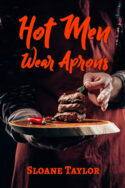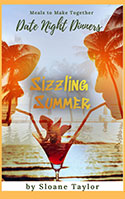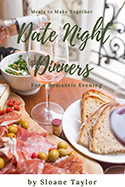To Comma, or not to Comma? That is the Question
May 4, 2012 | It's All About Writing
Webster defines a comma as a punctuation mark, used especially as a mark of separation within a sentence. Doesn’t that definition just clear it all up for you? If so, you’re lucky because it never did for me. Back to my Writer’s Bible, “The Elements of Style”.
Here’s the skinny; there are seven comma rules. We’ll take them out of order for simplicity.
1 – Dates are written as;
• Jan. 24, 2006.
• 24 Jan. 2006.
In the second example no comma is used.
2 – In a series of three or more terms with a single conjunction, the commas are placed as follows;
• I enjoy tennis, skiing, and books.
• Jason, Fred, and Esther went to the farm.
You can’t drop the last comma. I don’t know, maybe the Punctuation Police force you to repeat English 101 for eternity if you do.
The exception is if you’re writing a business name. The last comma is omitted.
• Jefferson, Clemmons, Blake and Company
3 – Use a comma before and/or after a proper name or place;
• “Hi, John.”
• “Hey, John, did you see the dog?”
• Munich, Germany
4 – A comma is inserted before a conjunction introducing an independent clause;
• She was in a situation which should have scared the hell out of her, but didn’t.
• In no time the airplane landed, and the passengers clapped with joy.
5 – Don’t use a comma to join independent clauses. If the clauses are grammatically complete and not joined by a conjunction, it’s the semicolon’s time to come out and play.
• It is nearly half past five; we cannot reach town before dark.
6 – Don’t break sentences in two. Meaning, don’t use periods when you should use a comma. “The Elements of Style” have the best examples;
• I met them on a Cunard liner many years ago. Coming home from Liverpool.
• She was an interesting talker. A woman who had traveled all over the world and lived in half a dozen countries.
The sentences don’t make sense as written. In both examples a comma should replace the first period.
If you want more dramatic effect in your sentence do the following;
• He yanked the cell phone from his pocket and punched in the number. The phone range. No one answered.
Don’t use the above example often in your story, it has a choppy effect and the editor won’t like it, let alone the reader. Clipped sentences, as the above example, are more often used in dialogue.
7 – Enclose parenthetic expressions between commas. A parenthetic expression is a word, phrase, or sentence inserted in a passage to explain or modify the thought. Again from “The Elements of Style”;
• The best way to see the country, unless you are pressed for time, is to travel on foot.
In a nutshell here’s how it works for the author;
• The eight rules are standard and must be followed so you look like a professional writer.
• My guru Beth Anderson taught me to listen to the flow of the words. Use the commas when you need the reader to pause and give them a little time to prepare for what’s next.
• Use common sense. As you apply the rules they will become second nature.
Have a terrific weekend. I’ll be back Monday with Cornell DeVille, author of chilling young adult books. Be sure to stop in. Until then…
Happy Writing!
Sloane Taylor
www.facebook.com/AuthorSloaneTaylor




